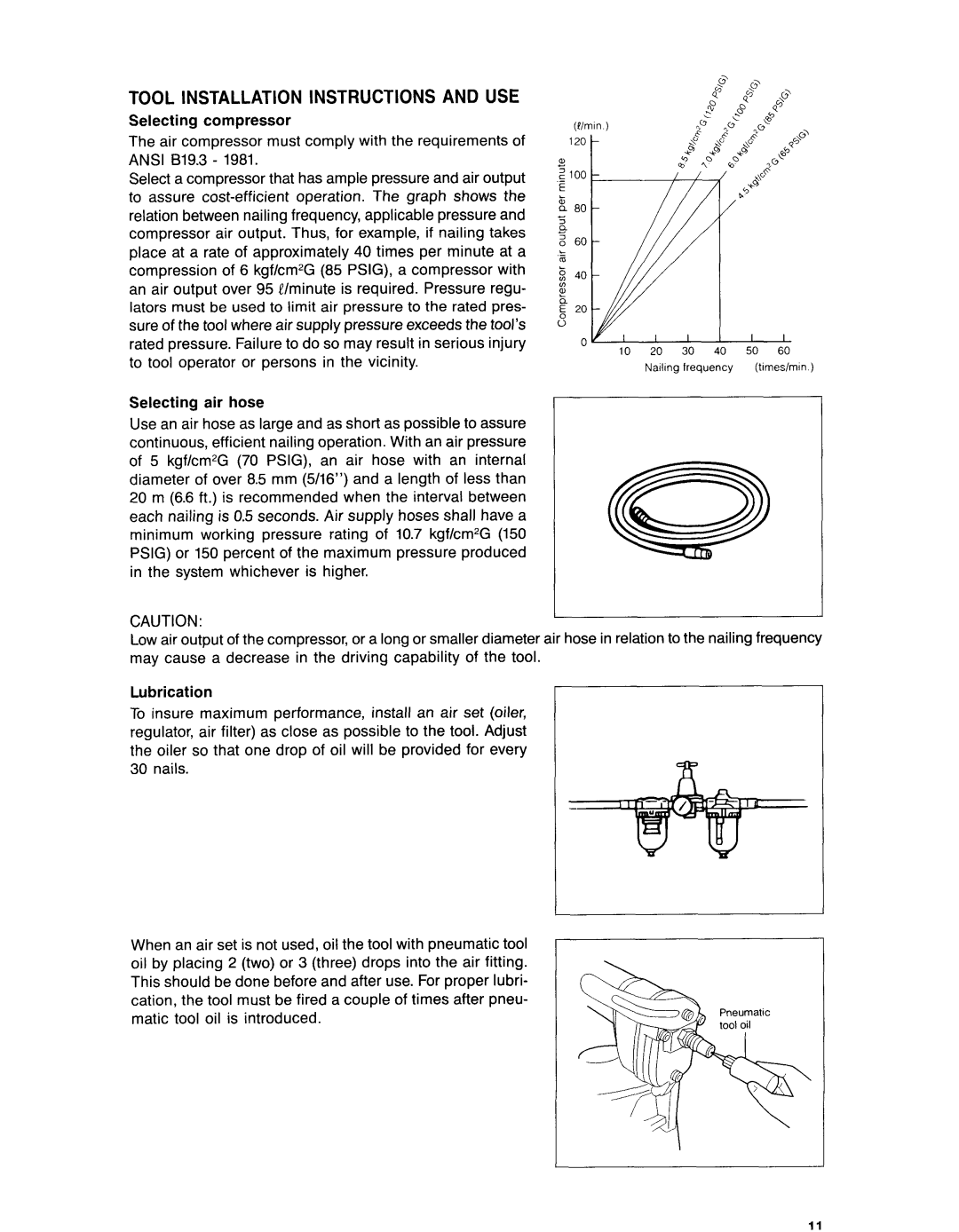
TOOL INSTALLATION INSTRUCTIONS AND USE
Selecting compressor
The air compressor must comply with the requirements of ANSI 619.3 - 1981.
Select a compressor that has ample pressure and air output to assure
Selecting air hose
Nailing frequency (timeshin )
Use an air hose as large and as short as possible to assure continuous, efficient nailing operation. With an air pressure of 5 kgf/cm2G (70 PSIG), an air hose with an internal diameter of over 8.5 mm (5/16”) and a length of less than 20 m (6.6 ft.) is recommended when the interval between each nailing is 0.5 seconds. Air supply hoses shall have a minimum working pressure rating of 10.7 kgf/cm2G (150 PSIG) or 150 percent of the maximum pressure produced in the system whichever is higher.
CAUTION:
Low air output of the compressor, or a long or smaller diameter air hose in relation to the nailing frequency may cause a decrease in the driving capability of the tool.
Lubrication
To insure maximum performance, install an air set (oiler, regulator, air filter) as close as possible to the tool. Adjust the oiler so that one drop of oil will be provided for every
30nails.
When an air set is not used, oil the tool with pneumatic tool oil by placing 2 (two) or 3 (three) drops into the air fitting. This should be done before and after use. For proper lubri- cation, the tool must be fired a couple of times after pneu- matic tool oil is introduced.
11
